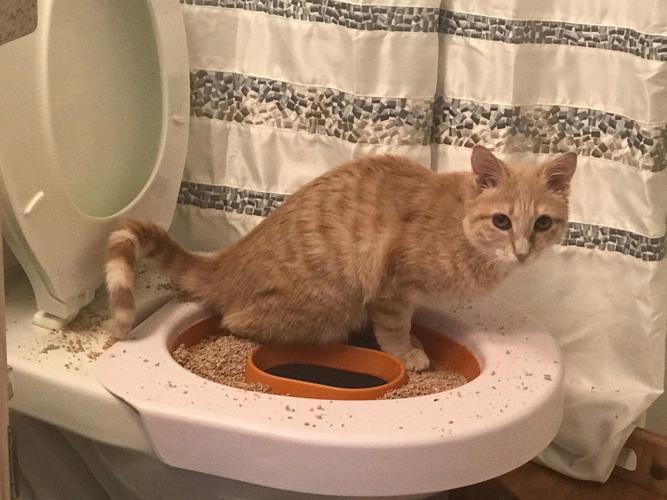We have noticed this great article involving Can You Flush Cat Poo or Litter Down the Toilet? directly below on the internet and felt it made good sense to talk about it with you on this page.

Introduction
As cat proprietors, it's vital to be mindful of how we dispose of our feline buddies' waste. While it might appear practical to flush feline poop down the bathroom, this technique can have destructive consequences for both the atmosphere and human health and wellness.
Alternatives to Flushing
The good news is, there are more secure and much more liable methods to dispose of pet cat poop. Think about the adhering to choices:
1. Scoop and Dispose in Trash
The most typical technique of dealing with feline poop is to scoop it right into a biodegradable bag and throw it in the trash. Make sure to utilize a specialized trash inside story and throw away the waste without delay.
2. Use Biodegradable Litter
Go with biodegradable cat trash made from materials such as corn or wheat. These clutters are eco-friendly and can be safely dealt with in the trash.
3. Hide in the Yard
If you have a backyard, take into consideration burying pet cat waste in a marked location far from veggie yards and water sources. Make sure to dig deep adequate to stop contamination of groundwater.
4. Set Up a Pet Waste Disposal System
Buy a pet waste disposal system specifically designed for cat waste. These systems use enzymes to break down the waste, decreasing smell and environmental effect.
Health and wellness Risks
Along with ecological problems, purging cat waste can also present health dangers to human beings. Pet cat feces might have Toxoplasma gondii, a bloodsucker that can trigger toxoplasmosis-- a possibly severe ailment, especially for expecting females and people with weakened immune systems.
Environmental Impact
Purging feline poop presents hazardous pathogens and parasites into the supply of water, positioning a significant danger to marine ecosystems. These impurities can adversely affect marine life and concession water high quality.
Final thought
Responsible family pet ownership expands beyond supplying food and sanctuary-- it likewise involves appropriate waste management. By refraining from purging pet cat poop down the commode and choosing different disposal techniques, we can minimize our environmental footprint and shield human health.
Why Can’t I Flush Cat Poop?
It Spreads a Parasite
Cats are frequently infected with a parasite called toxoplasma gondii. The parasite causes an infection called toxoplasmosis. It is usually harmless to cats. The parasite only uses cat poop as a host for its eggs. Otherwise, the cat’s immune system usually keeps the infection at low enough levels to maintain its own health. But it does not stop the develop of eggs. These eggs are tiny and surprisingly tough. They may survive for a year before they begin to grow. But that’s the problem.
Our wastewater system is not designed to deal with toxoplasmosis eggs. Instead, most eggs will flush from your toilet into sewers and wastewater management plants. After the sewage is treated for many other harmful things in it, it is typically released into local rivers, lakes, or oceans. Here, the toxoplasmosis eggs can find new hosts, including starfish, crabs, otters, and many other wildlife. For many, this is a significant risk to their health. Toxoplasmosis can also end up infecting water sources that are important for agriculture, which means our deer, pigs, and sheep can get infected too.
Is There Risk to Humans?
There can be a risk to human life from flushing cat poop down the toilet. If you do so, the parasites from your cat’s poop can end up in shellfish, game animals, or livestock. If this meat is then served raw or undercooked, the people who eat it can get sick.
In fact, according to the CDC, 40 million people in the United States are infected with toxoplasma gondii. They get it from exposure to infected seafood, or from some kind of cat poop contamination, like drinking from a stream that is contaminated or touching anything that has come into contact with cat poop. That includes just cleaning a cat litter box.
Most people who get infected with these parasites will not develop any symptoms. However, for pregnant women or for those with compromised immune systems, the parasite can cause severe health problems.
How to Handle Cat Poop
The best way to handle cat poop is actually to clean the box more often. The eggs that the parasite sheds will not become active until one to five days after the cat poops. That means that if you clean daily, you’re much less likely to come into direct contact with infectious eggs.
That said, always dispose of cat poop in the garbage and not down the toilet. Wash your hands before and after you clean the litter box, and bring the bag of poop right outside to your garbage bins.
https://trenchlesssolutionsusa.com/why-cant-i-flush-cat-poop/

Do you like more info about Don’t flush cat feces down the toilet? Write feedback further down. We'd be delighted to find out your insights about this write-up. We hope that you come back again before long. Are you aware of somebody else who is occupied with the niche? Take a moment to promote it. Thanks a lot for taking the time to read it.
Hire A Pro